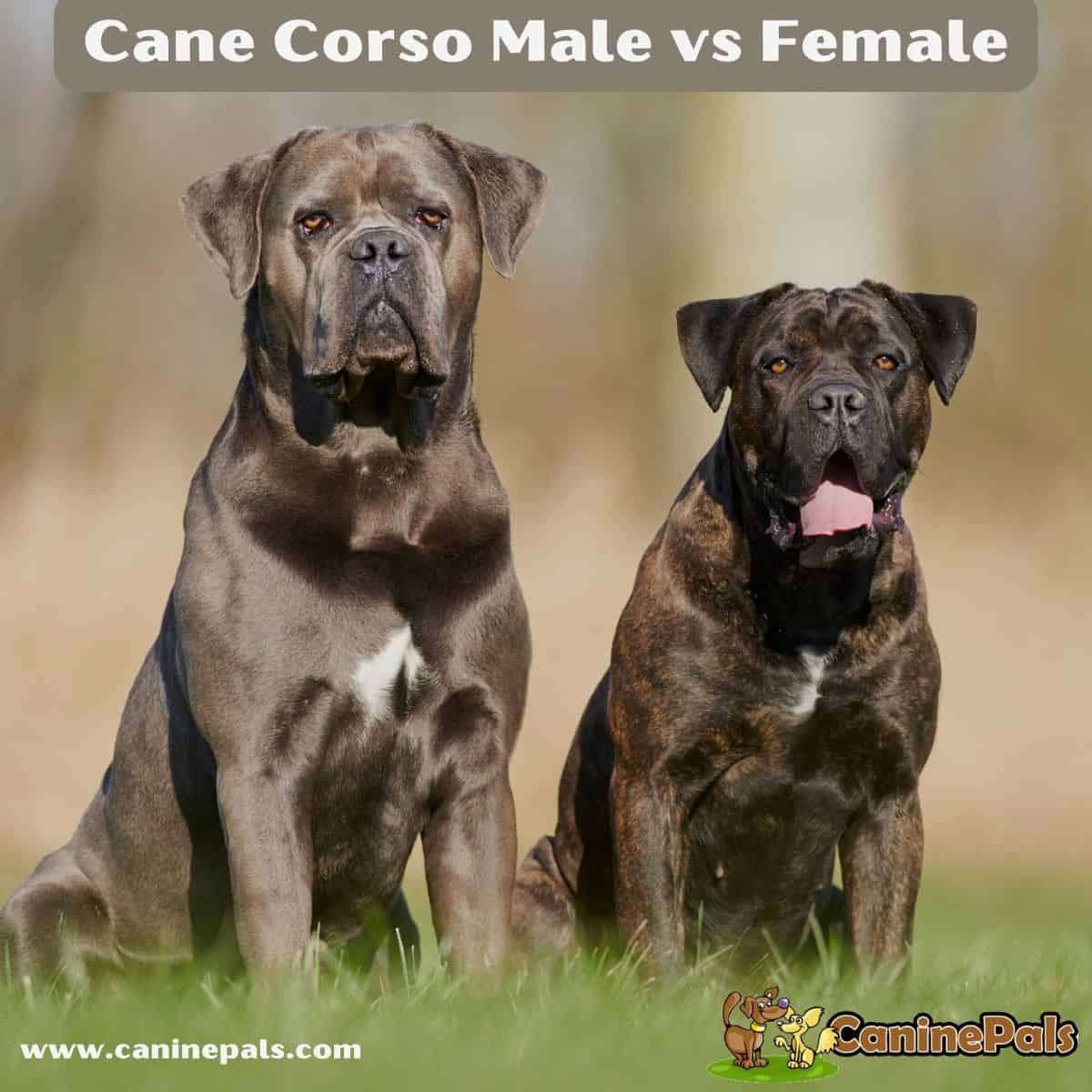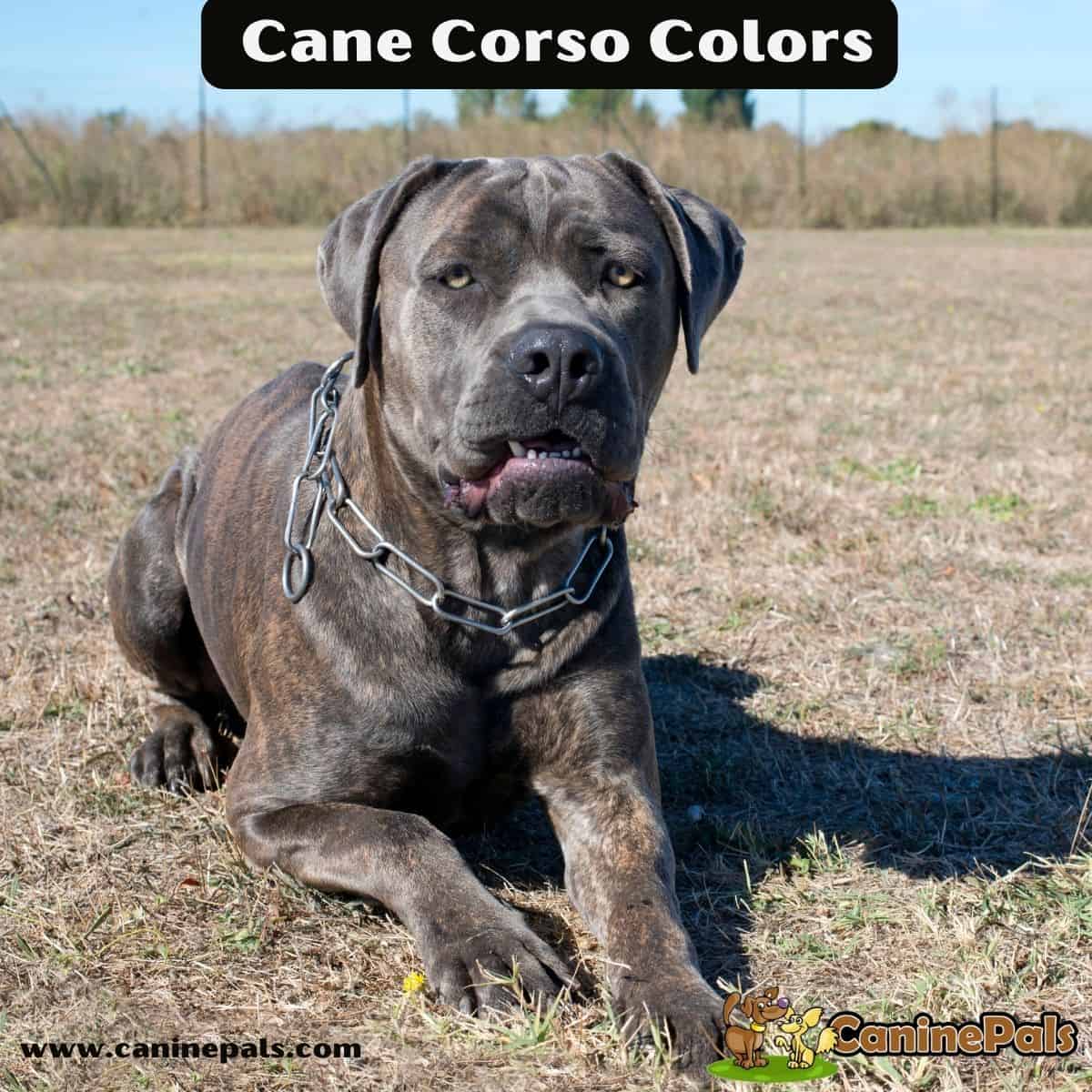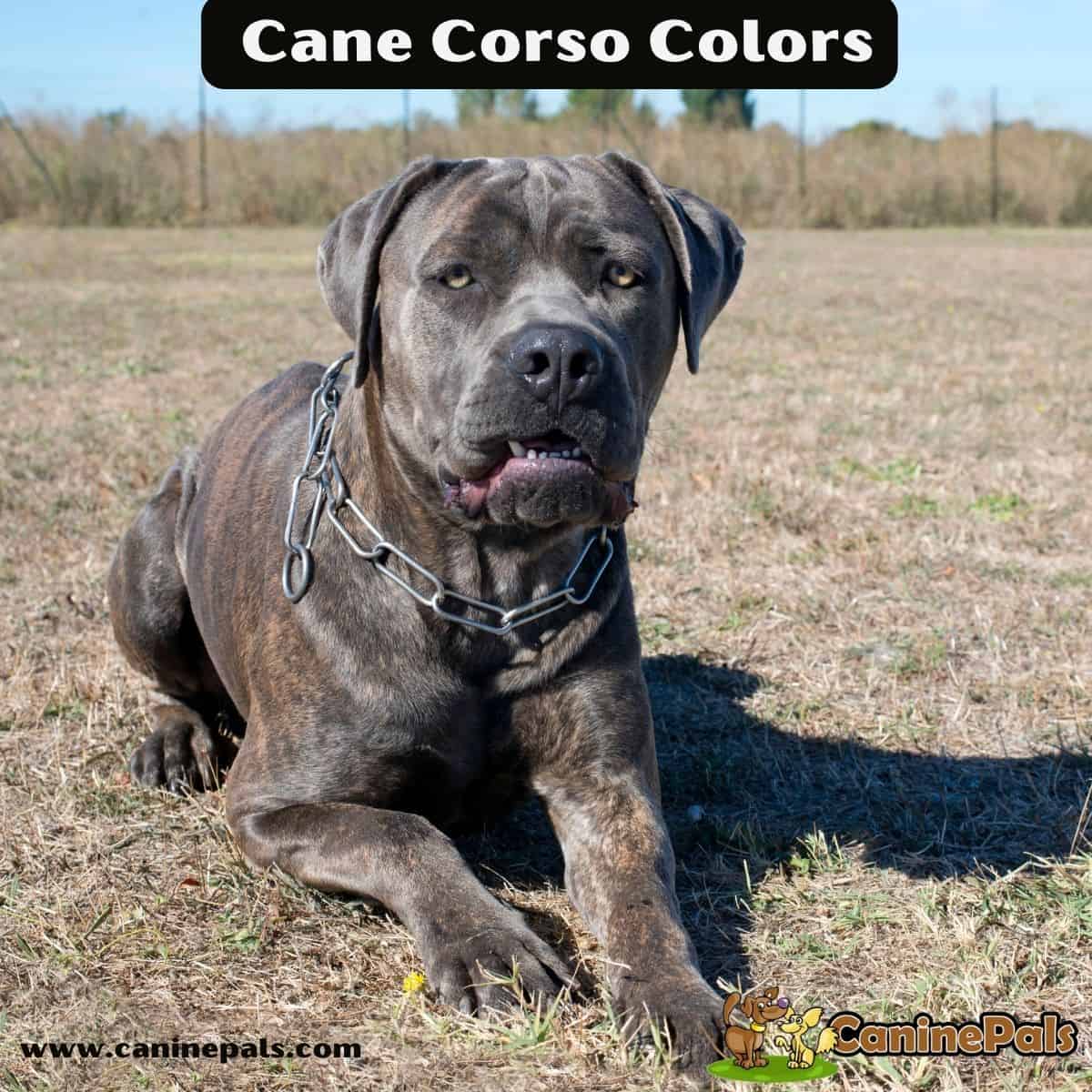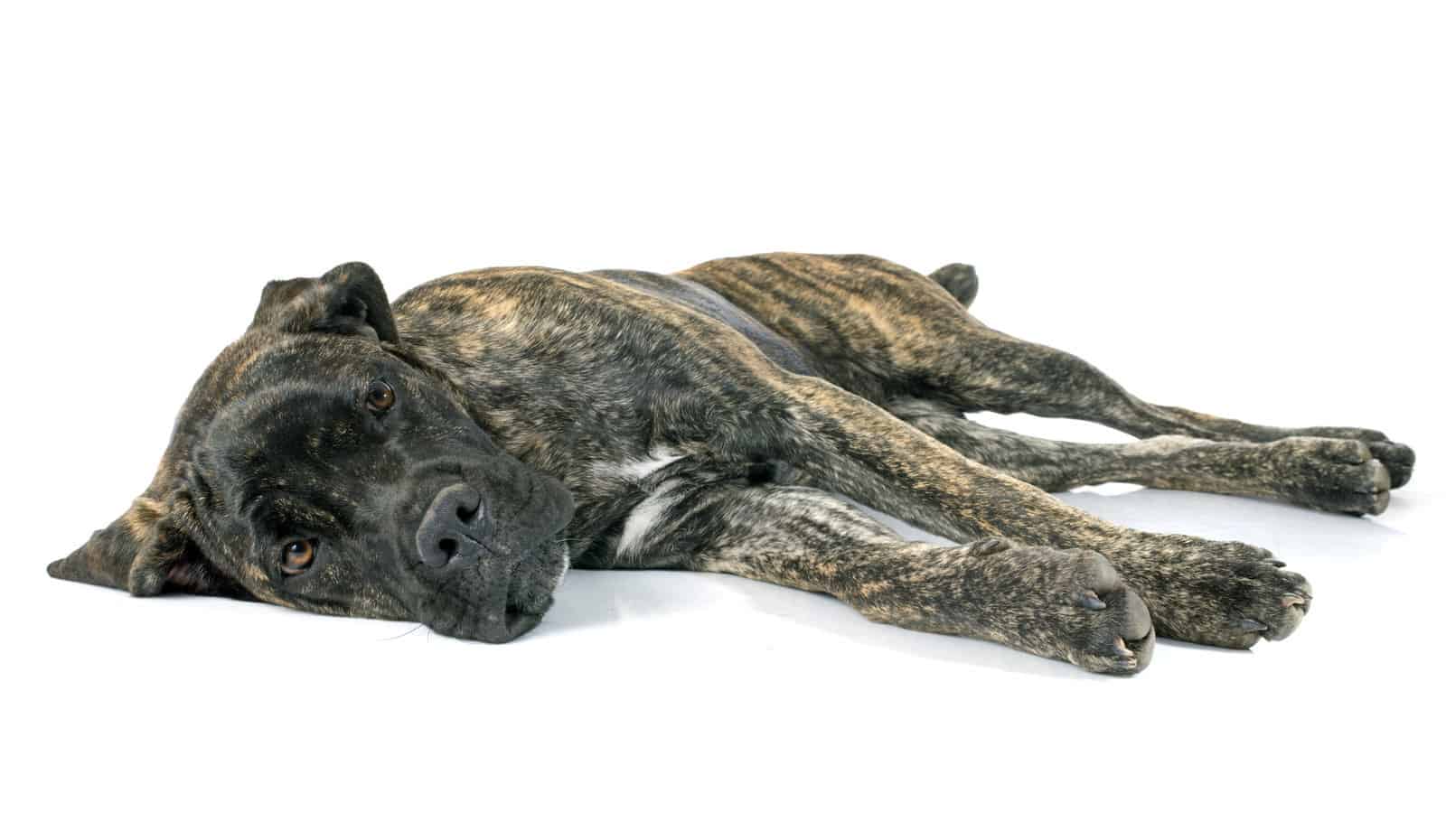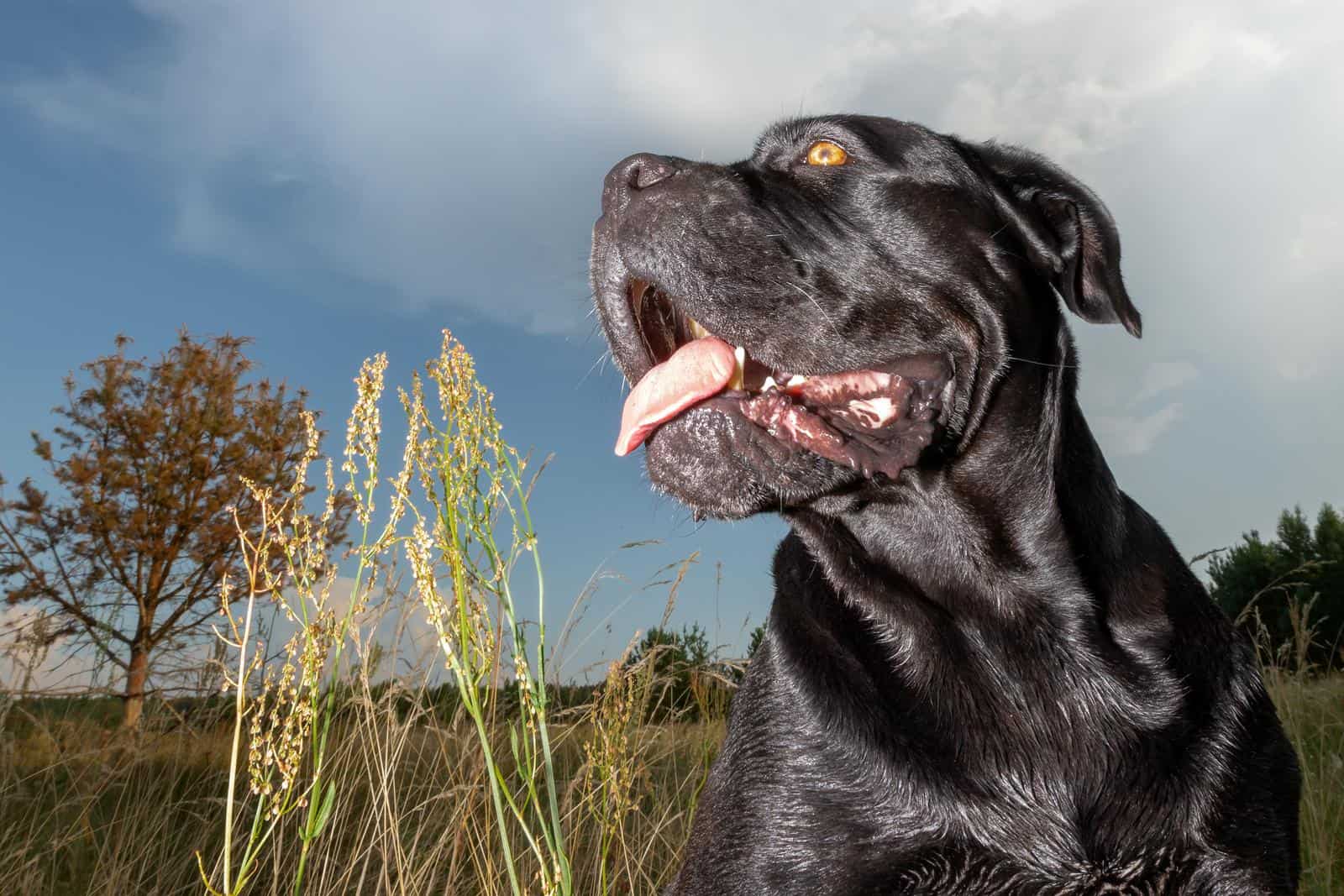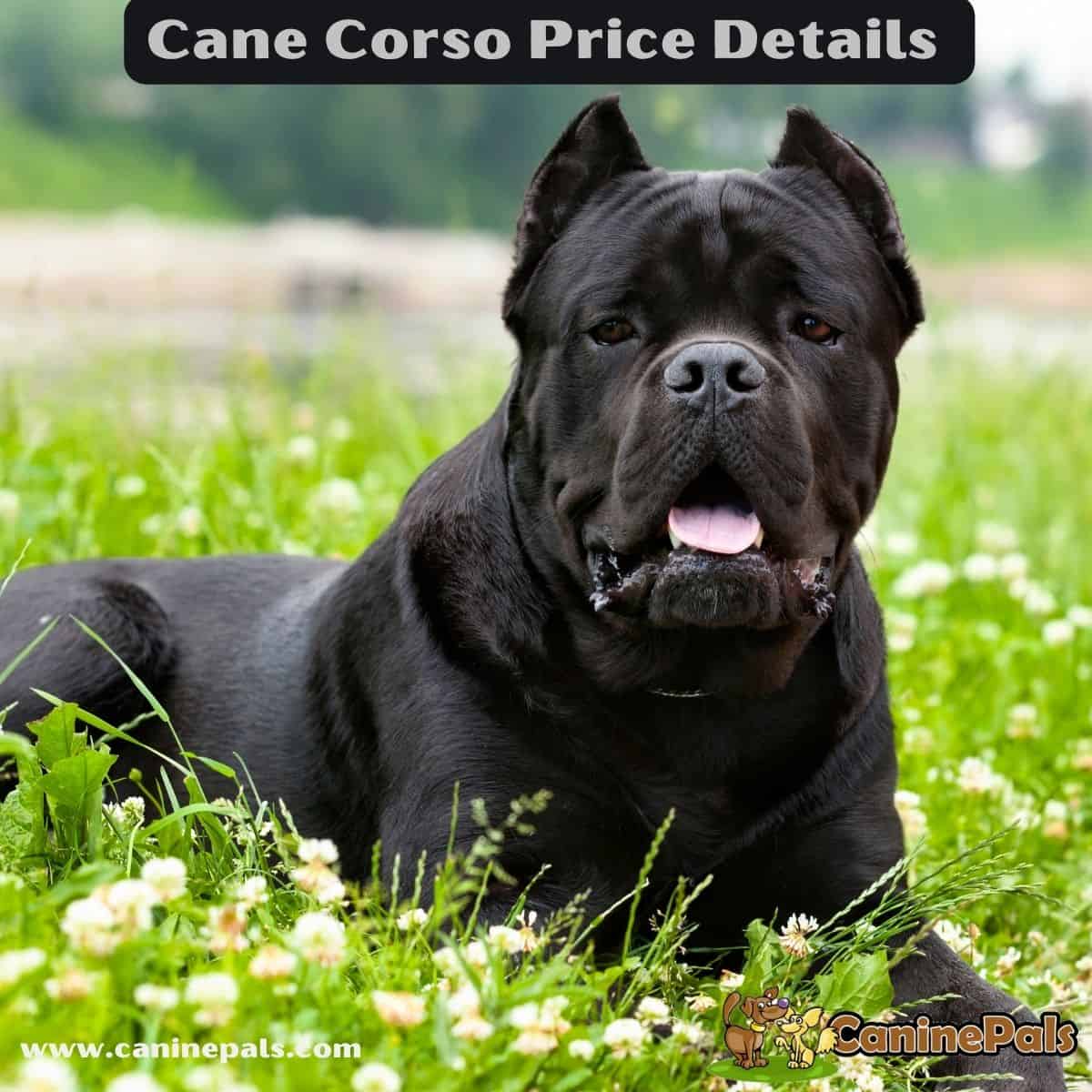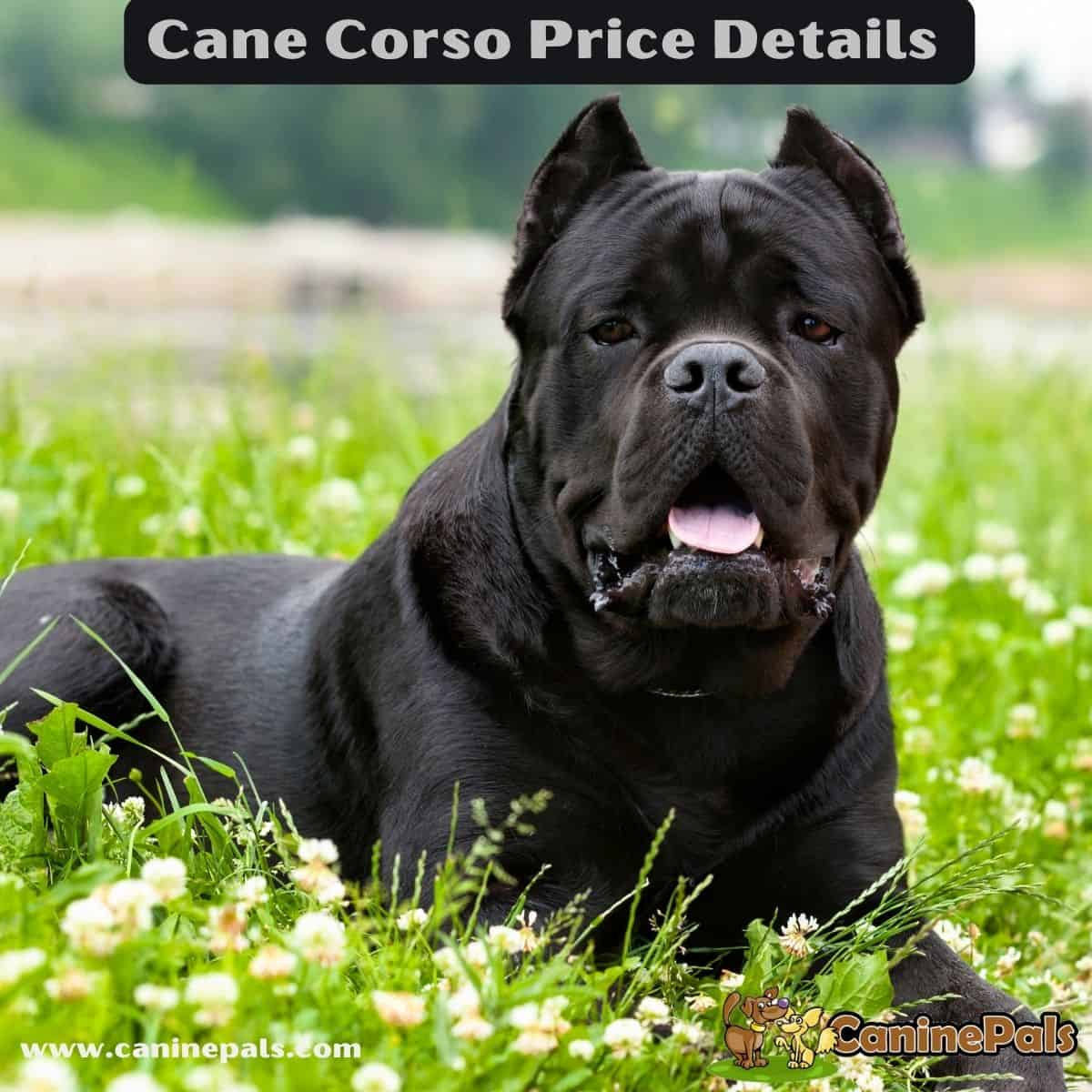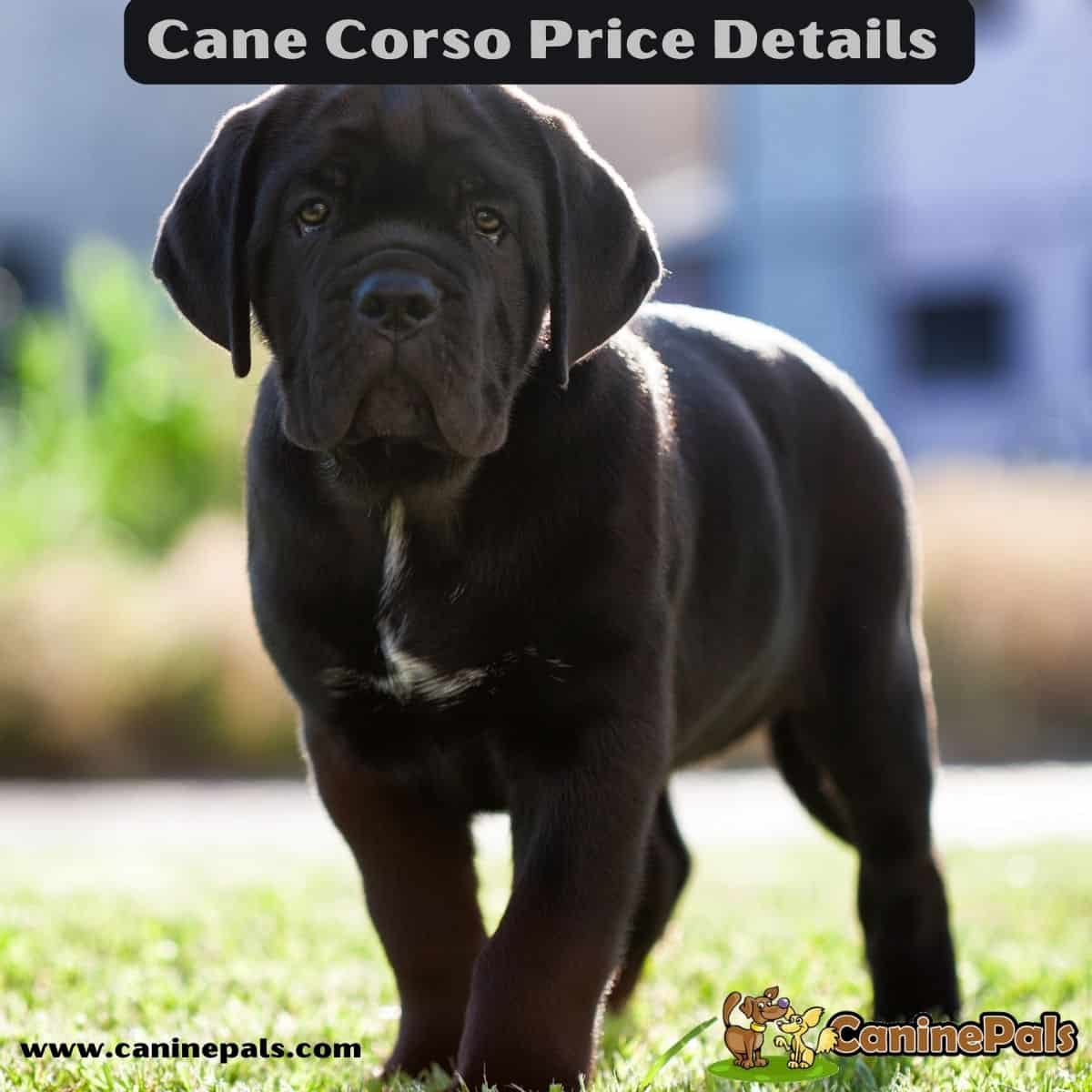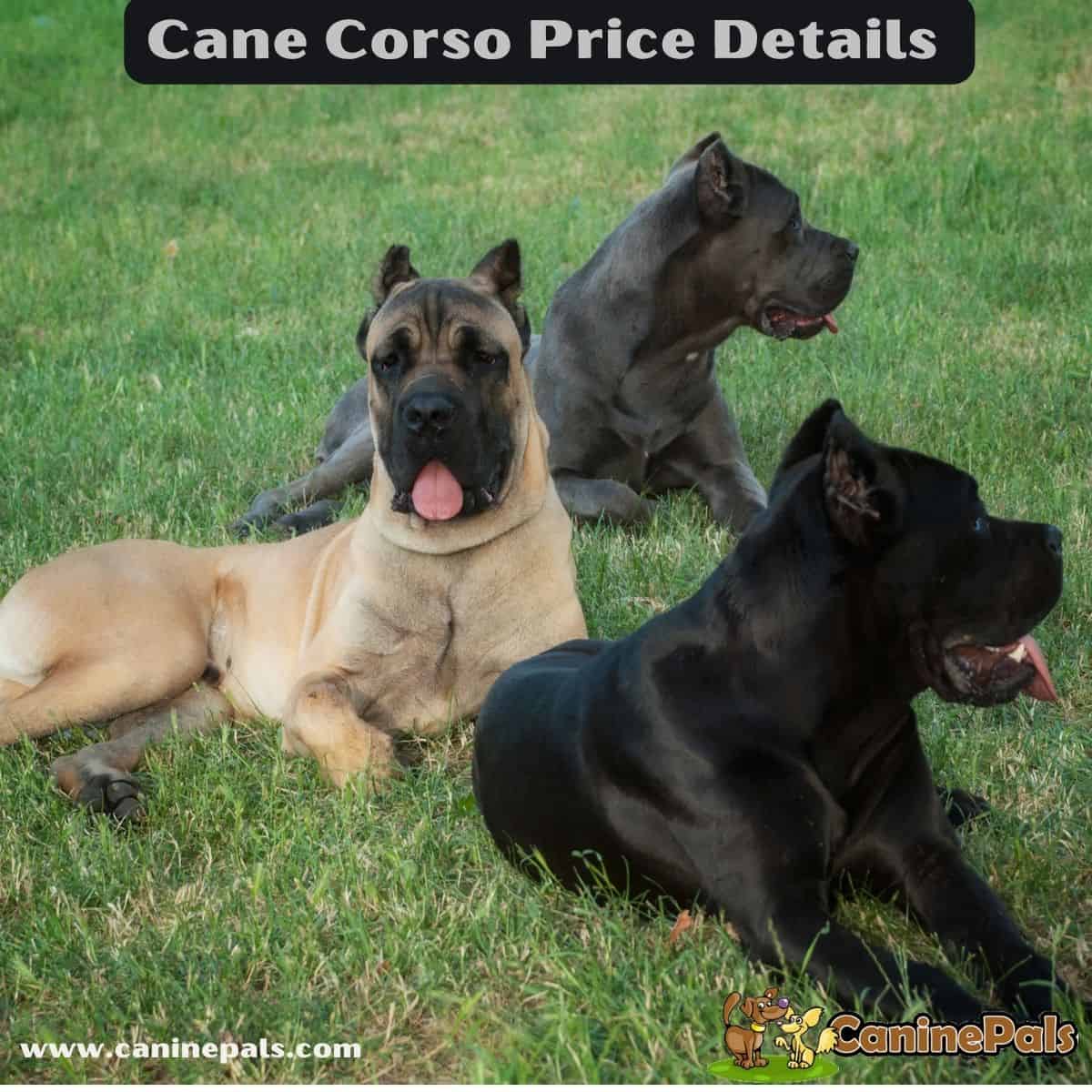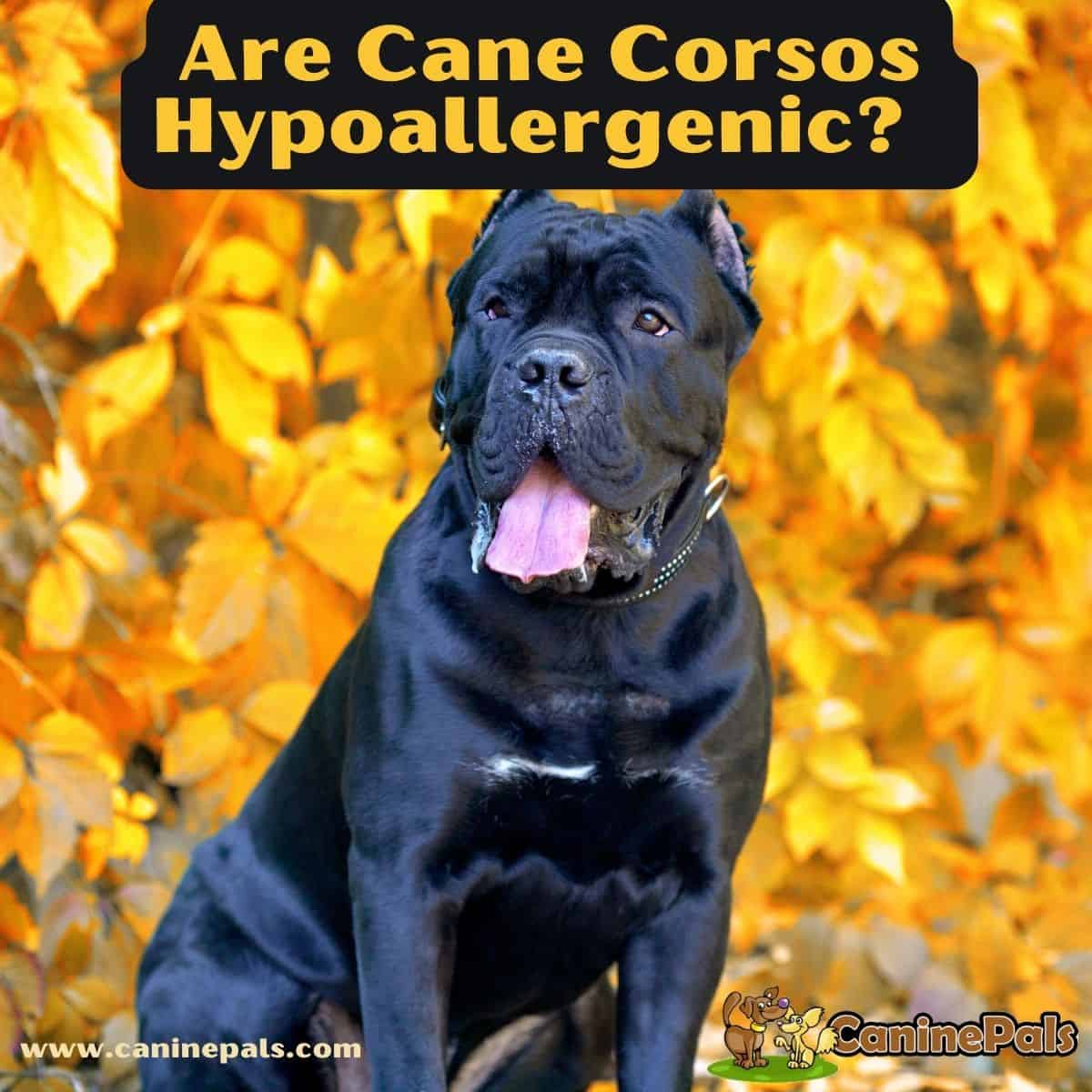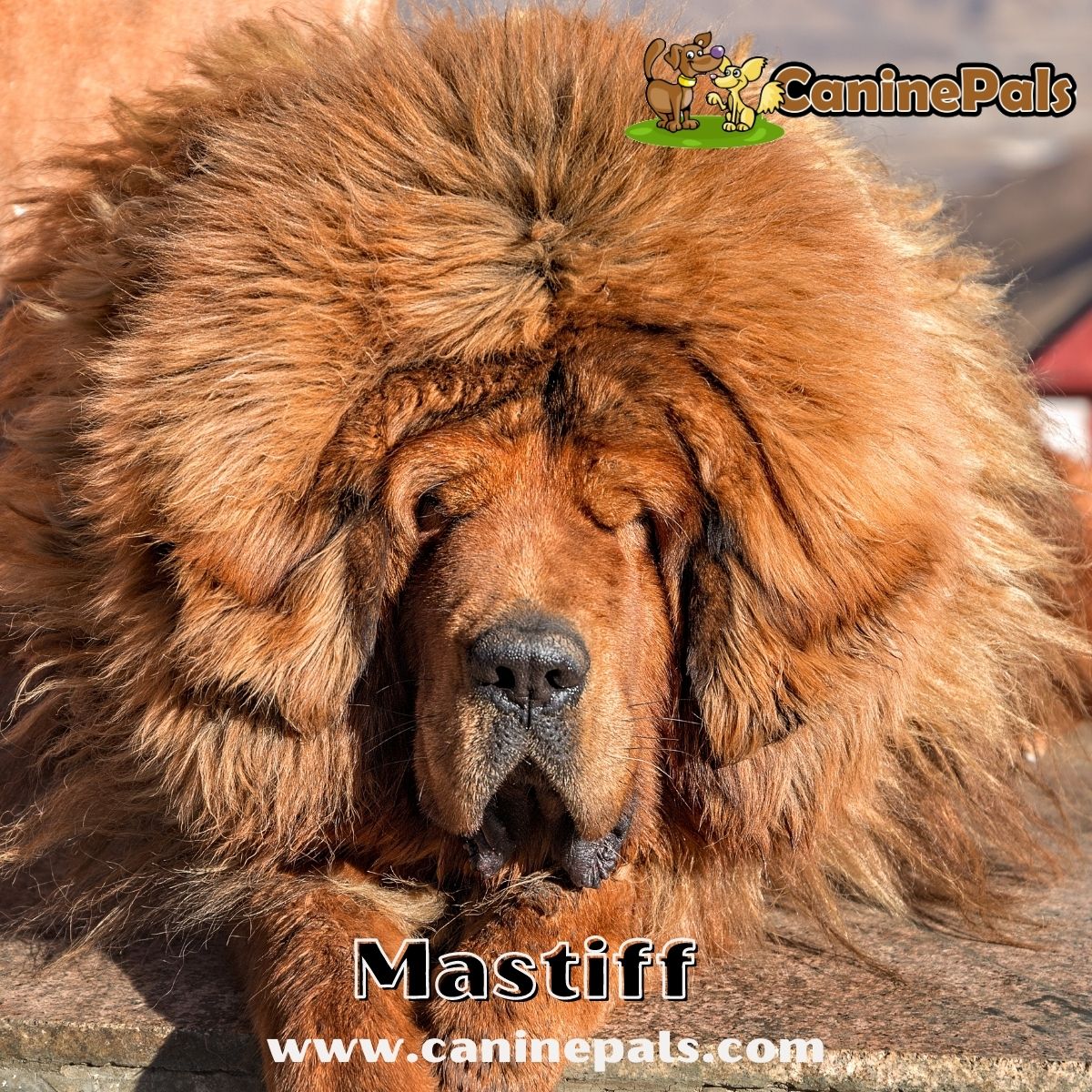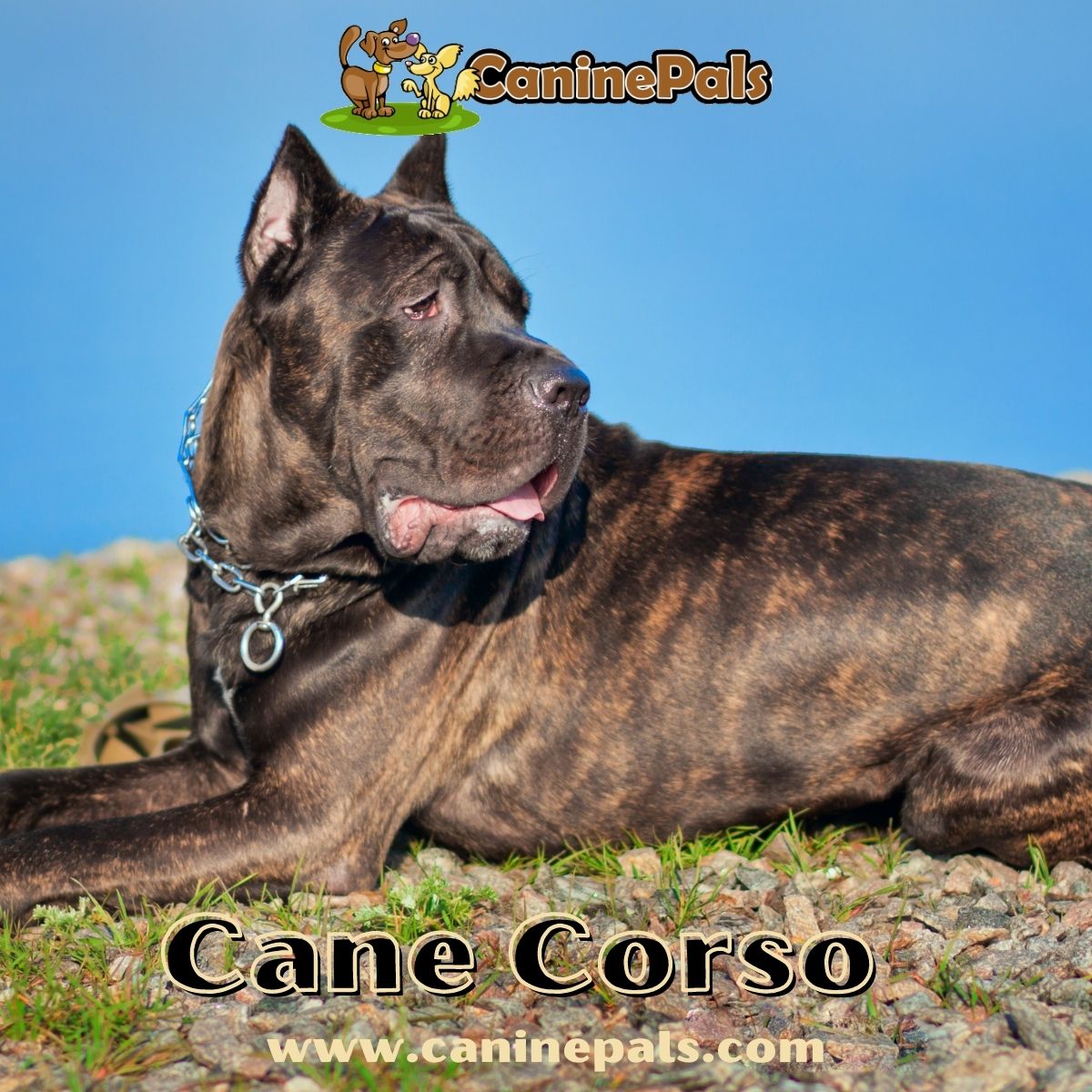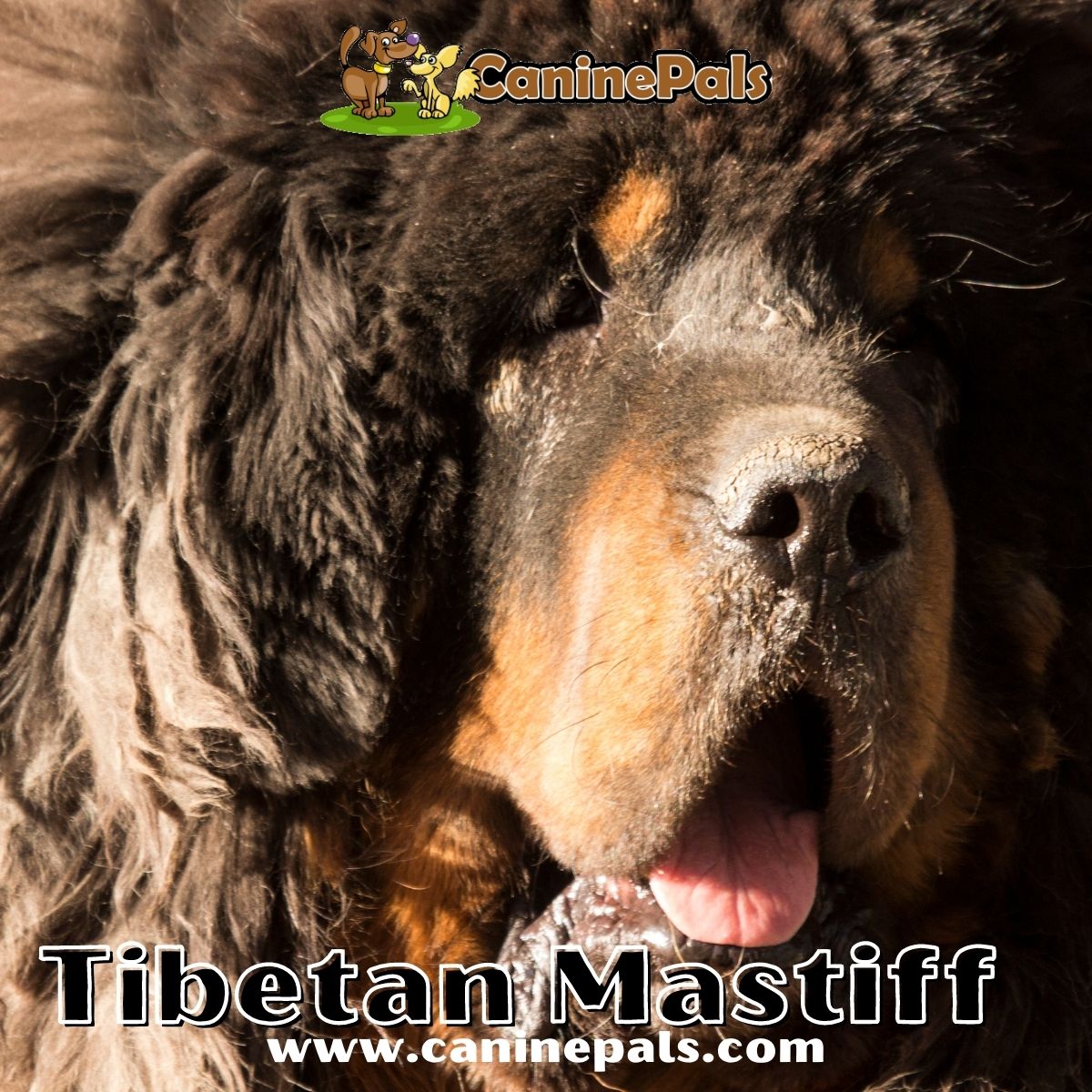The Cane Corso is a large, ancient breed of dog that originated in Italy. Dogs vary greatly by sex and temperament – male Cane Corsos are typically more aggressive than females, with an average life span of 10 years, while female dogs can live up to 10 or 12 years.
They are loyal, confident, and agile pets. Despite their huge size, the Cane Corso temperament is gentle and affectionate with family, including kids. They are best suited to experienced dog parents.
According to the American Kennel Club, Cane Corso is the 32nd most popular dog breed. They are highly intelligent but have an independent nature.
Cane Corsos were bred to hunt wild boars, and today, they act as a reliable watchdog. The original purpose for the development of this gentle giant was as a hunting companion; they were bred to assist hunters who would use them on boar hunts where their size enabled them both to be able to hold prey down until it could be killed and provide protection from wild animals at night. The males tended towards being more territorial.
Cane Corso Male vs. Female Quick Facts
- Cane Corso males are larger in size and have a more muscular build than females.
- If you’re an experienced owner, the male Cane Corso is perfect for your household. They can be stubborn and dominant with their personalities, so make sure everyone in charge knows what they need from this dog before adopting one!
- Female Cane Corsos are the perfect pets for those who have never owned a Cane Corso dog. They’re easy to train; you can expect them to be sweet-tempered and intelligent!
- Cane Corsos make excellent guard dogs due to their strong territorial instincts and protective natures.
- Females are typically better with small children than males and are often used as therapy dogs.
The Cane Corso male is an excellent choice for a pet or guard dog, while the female is ideal for families with older children.

Cane Corso Temperament Male vs Female
Dog breeds are very different in temperament, and one thing that can make a breed stand out is whether they’re male or female. In the case of Cane Corso dogs, males tend to be more aggressive than females because they need this trait for protection from other animals like bears. The female Cane Corso has been known to be less energetic and more affectionate towards their owners because they usually have no aggression whatsoever.
Size Difference Between Male and Female Cane Corso
For most dog breeds, it’s common to find males larger and heavier than females, which generally holds true for the Cane Corso.
However, size can differ among individuals, and it’s not always the case that males are bigger than females. So, while this size difference is often the most noticeable distinction between the genders in these dogs, there are exceptions to this trend.
Male and female Cane Corso differ in their size. For example, males usually stand 25 to 27 inches tall, while females can measure up to 26 inches tall.
Aggression
It’s crucial to recognize that Cane Corsos, while not inherently aggressive, possesses an instinct to protect. This large dog breed requires proper training and socialization from an early age to manage these tendencies effectively.
Particularly, male Cane Corsos and those that are intact (unneutered) may exhibit a dominant nature, which can escalate to aggression if not correctly handled.
On the other hand, female Cane Corsos may display aggression in situations where they perceive a threat to their puppies or territory.
Despite these tendencies, the Cane Corso breed is protective rather than aggressive. Proper training and proper socialization are key to nurturing well-adjusted behaviors in these dogs.
Regarding cohabitation, male Cane Corsos are often more aggressive towards other males, and similarly, females may show aggression towards other females. Therefore, if keeping multiple Cane Corsos, consider pairing them with differing genders to mitigate potential conflicts.
Male Cane Corso | Female Cane Corso |
Dominant and can be aggressive | Softer natured and prefer male owners |
Harder than female Cane Corso to train | Easy to train |
A large, strong dog which is slightly bigger than females of the breed | Smaller in size than the male Cane Corso |
Male Cane Corso dogs are recommended for male owners | The milder natured female Cane Corso is more suited to inexperienced owners |
What is the Temperament of a Cane Corso?
Corsos are intelligent, loyal, eager to please, and very loyal to their humans. However, they can also be assertive and willful with a dominating personality. Cane Corsos are humble and affectionate dogs, but only towards their family. This breed is sensitive and understands tonal variations.
Cane Corsos are more athletic, agile, energetic, and adventurous than the other mastiff breeds. They require personal interaction and lots of companionship. Corsos enjoy time with their owners, whether it’s a vigorous play session, a long walk, or just sitting on the couch.
It is no surprise that all Corsos share the following personalities:
- Loyal and courageous: Corsos were bred to guard homes, families, and livestock. They are extremely loyal to the family. This dog is an exceptional protector of its family and home. Since Corsos are loyal, they are obedient dogs and will do anything to please their human companions. The Cane Corsos display a courageous temperament and can take on large animals.
- Independent: Cane Corsos have a bossy nature and can sometimes be dominant, strong-willed, stubborn, and independent. Giving up is not at all their character! Corsos have independent minds and are not pushovers to raise and train. Cane Corsos are difficult to house train. To keep a Corso, you must take on the challenges and its independent nature.
- Intelligent: The Corsos are very intelligent dogs. They have a good memory, understand human tone variations, and react properly to gestures. They can be trained easily, but this needs to be done sensitively and with variety. Corsos do so well in dog sports such as fetch, agility, and flyball.
- Affectionate: Cane Corso is docile and very affectionate towards their family, including children. If Corso puppies are socialized properly, they make a wonderful family dog. They bond very closely with their family. Corsos can be confrontational with other dogs when they are not socialized properly.
- Watchdogs: Cane Corsos have a strong prey drive and are reliable watchdogs. They are suspicious of strangers and can be overly cautious or assertive if not socialized properly. They are always quick to sound an alarm if they find someone suspicious around the house.
- Playful: Cane Corsos are highly playful dogs. Fetch, frisbee toss, and ball games will keep them happy and engaged. Corsos will enjoy spending time and playing with their human companions. They seek to win and don’t lose graciously. Cane Corsos must be taught to play nicely from puppyhood.
- Doesn’t tolerate being alone: These gentle giant dogs crave companionship and attention. It is not a good idea to leave Cane Corsos all by themselves as you go for a walk or to work. They are more prone to worry or even panic when left alone by their owner. Cane Corsos tend to be anxious, bored, and lonely when left alone. They can become problematic and destructive due to separation anxiety.
- Sensitive: Cane Corsos are moderately sensitive dogs. They cannot easily handle inconsistent routines, noisy environments, and chaotic households. Corsos understands your tone of voice and responds well to positive reinforcement techniques.
- Vigorous: Cane Corsos have a vigorous temperament. They are sporty, energetic, love to have a job, and ready to meet any challenge. They might strain on the leash, try to plow through obstacles, and even eat and drink with big gulps.
The temperament of a Cane Corso is also shaped by raising and training. Like all dogs, Corsos need early socialization and exposure to many different people, sights, sounds, and experiences during puppyhood.
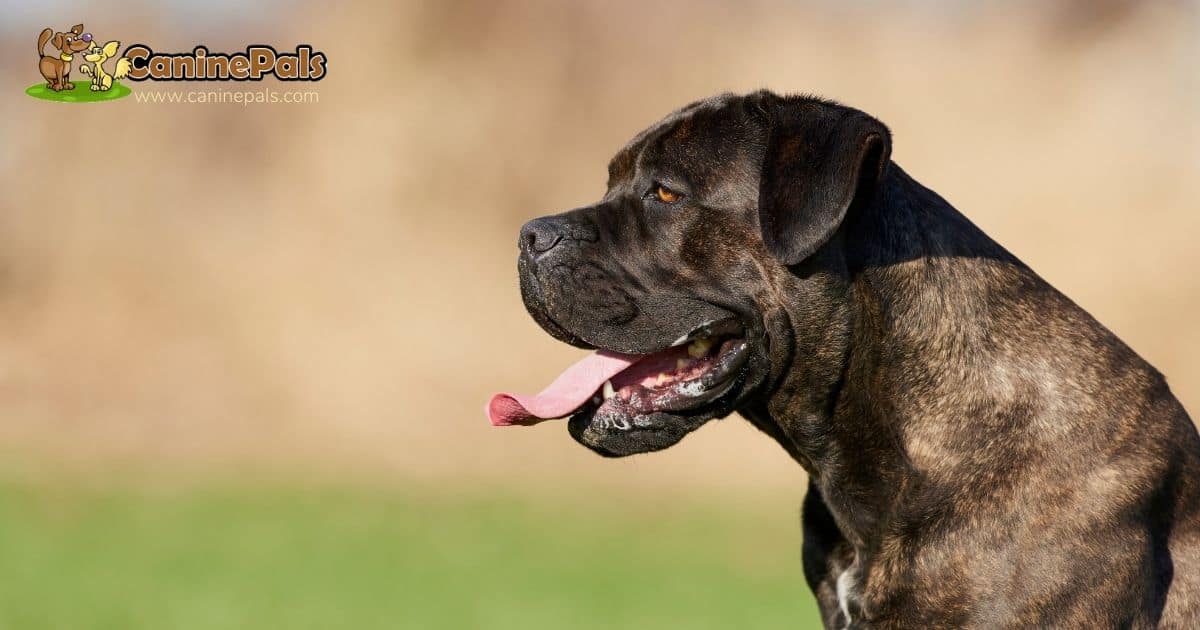
Are Cane Corsos Good With Kids?
A well-trained Cane Corso is gentle, affectionate, and friendly with kids. Children should still be supervised during playtime despite being friendly and loving with children. Train your Cane Corso to learn how to function in public settings.
Try to keep a watchful eye on your Cane Corso while it’s around kids. Learn to pick up specific cues and behavior when it reaches aggressive tendencies.
Cane Corsos might be the world’s gentlest dog, but they are playful, large, and powerful. There’s room for any potential mishaps.
Due to their large size, they are best suited to a family with older kids. Teach your kids to respect the Cane Corso and understand their strengths and capabilities.
Are Cane Corsos Good With Other Dogs?
Cane Corsos are not a good fit for families with other dogs. They are moderately friendly towards other dogs but pretty aggressive around dogs of the same sex. They can live peacefully with other dogs when they are brought up with them from puppyhood.
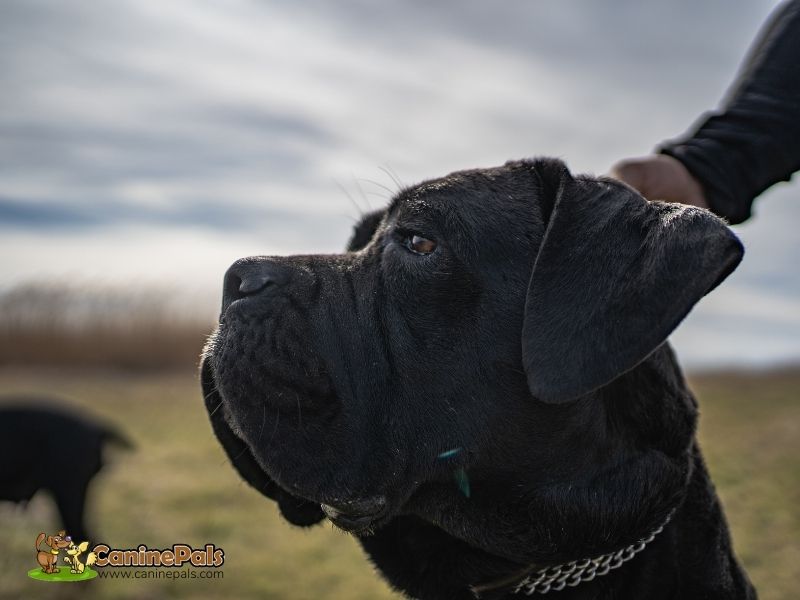
If a Corso is angry being around other dogs, it is because it wasn’t introduced to them early. If you want your Cane Corso to get along with other pups, you must start early and reward them for good behavior.
Are Cane Corsos Good With Cats and Small Animals?
The Cane Corso is a big dog with a strong prey drive but can be trained to get along with cats. A Cane Corso can live harmoniously with cats from puppyhood if brought up with them. It has to learn that the cat is also a family member.
A Cane Corso likely views strange animals as prey and does its best to kill them. Early socialization and obedience training may help curb this behavior. However, family members should remain vigilant and supervise interactions with neighbors’ cats.
Are Cane Corsos Good With Strangers?
When it comes to strangers, Cane Corsos are very protective. Corsos are serious and self-assured with strangers. However, they are generally mild-mannered unless aroused. They tend to bark at strangers and unfamiliar people.
Cane Corso Facts
The Cane Corso originated in Italy and is a large-boned, muscular dog. Before 1988, he only seemed to exist in Southern Italy and was a rare dog to find, but he has appeared in numerous paintings throughout Italy’s rich history.
His coat is short, thick, and coarse and is waterproof. It can be gray, fawn, black, or red or have brindle varieties in color, and the dog might also have a gray or black mask.
He’s easy to train and needs lots of exercise because he’s athletic. He’s very affectionate and bonds closely with families and children.
His coat sheds lightly, so it only needs the occasional brush.
Let’s Have a Look At Some Vital Stats of Cane Corso:
Stats | Description |
Dog Breed Group | Working Group |
Family | Mastiff |
Temperament | Affectionate, Smart, Loyal, Majestic |
Average Height | 25-27.5 inches (male), 23.5-26 inches (female) |
Weight Range | 88 to 120 pounds |
Grooming Needs | Low |
Exercise Requirements | High |
Other names | Italian Mastiff |
Life Expectancy | 10-11 years |
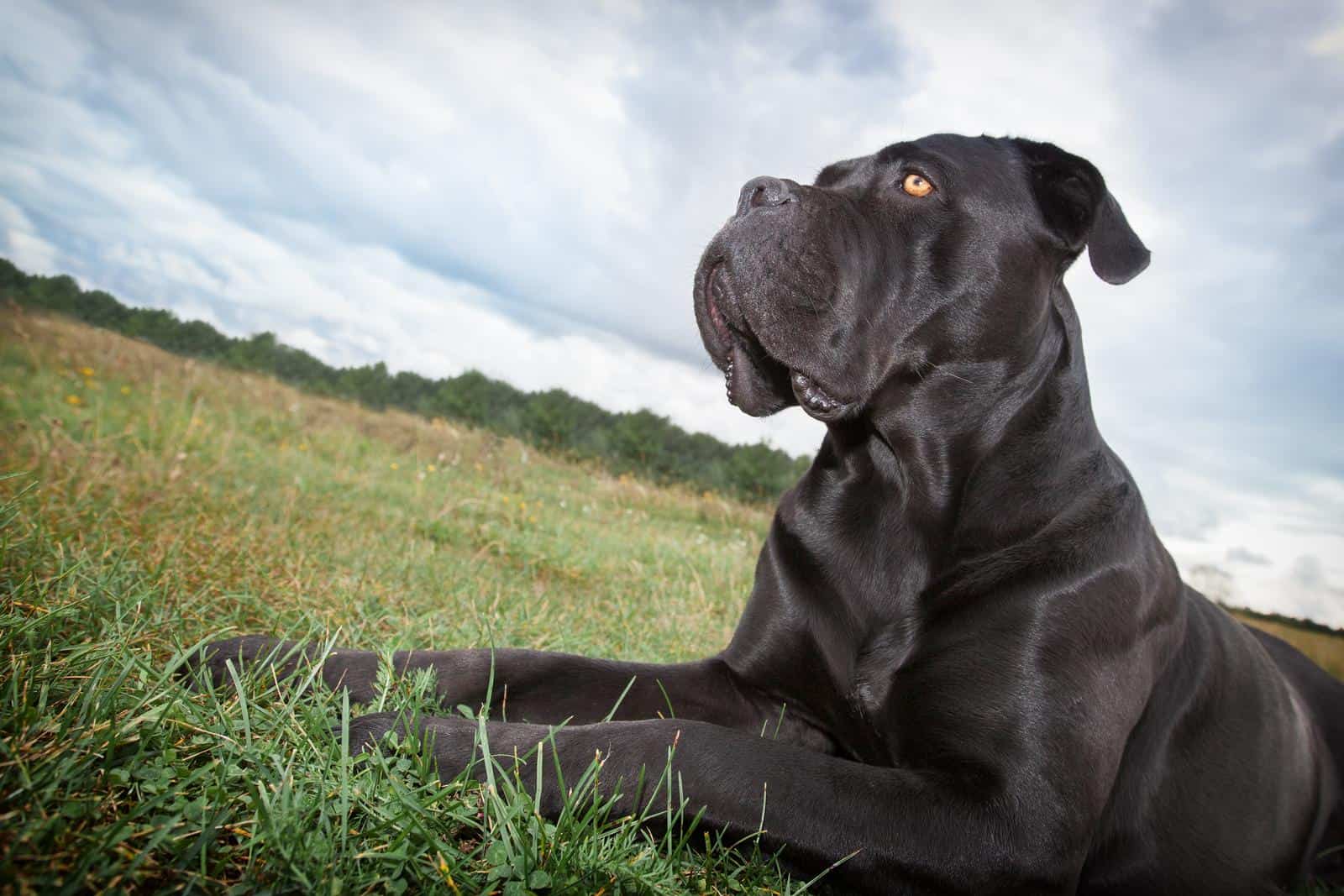
How to Have a Well-Rounded Cane Corso?
A Cane Corso puppy is like a blank canvas of love, energy, adventure, and excitement. Here are a few ideas for raising a well-mannered and happy dog to have a well-rounded Corso. You can take these steps to ensure that your Cane Corso will grow up to be a well-rounded pooch:
- Socialization is one of the most important concepts of dog ownership. Corsos need early socialization and exposure to many different people, pets, places, loud sounds, sights, and experiences during puppyhood. The most crucial socialization period is between 3 and 14 weeks of age.
- Give a lot of love and attention to your Corso. Make sure to spend time regularly with your pooch.
- Do not aggressively punish your dog. The Cane Corso does not respond well to yelling and harsh treatment.
- Feed your dog a healthy and balanced diet. Learn about ingredients and your Corso puppy’s dietary needs.
- Physical exercise helps keep your Cane Corso’s heart, lungs, joints, and digestive systems in optimum condition. It will also remove their excess energy. Fetch games, agility, sledding, and frisbee toss are great ways to remove their pent-up energy.
- For Cane Corsos, training needs to be reinforced over the course of your dog’s life. Training a Corso pup takes time and effort. It would be best if you were patient with your furry friend.
- Use positive reinforcement techniques and reward the good behavior of your dog. Cane Corsos are sensitive and feel special every time they are rewarded with praise and rewards.
- It would be best if you were consistent with your Corso. Lack of consistency might reinforce the negative behavior. Try to have realistic expectations for what a puppy is capable of.
Many behavioral problems have roots in a dog’s early upbringing. Set limits from the start, and your Cane Corso will be a wonderful companion.
Canine Corso Health Issues
The Cane Corso, a majestic breed with roots stretching back to Ancient Rome, is known for its role as a farm dog and a formidable bodyguard dog. Characterized by a large head and powerful build, this breed has a reputation for being a good choice for a family pet, capable of forming strong bonds with its owners. Despite their imposing appearance and territorial behavior, Cane Corsos are often great family pets, showing a significant difference in demeanor when around their loved ones compared to strangers.
However, like many large breeds, the Cane Corso faces several health issues that prospective owners should be aware of. Hip dysplasia is a common concern in these dogs, affecting their overall health and mobility. It’s a health issue where the fit between the hip joint and thigh bone isn’t as it should be, leading to arthritis and pain. This condition is something that both male and female counterparts can inherit, so it’s important to seek a reputable breeder who screens for this problem.
Regular check-ups with your veterinarian are key to managing this condition and ensuring the proper care of your Cane Corso.
Another health issue to be aware of is idiopathic epilepsy, which can lead to mood swings and seizures. This condition underscores the importance of regular veterinary visits to manage potential health complications effectively. For male Cane Corsos, testicular cancer is a concern, especially as they age, again emphasizing the need for regular health screenings.
First-time owners should carefully consider if the Cane Corso is the right breed for them. They are only sometimes the best fits for those unfamiliar with the needs of such a robust breed.
Cane Corso puppies, while adorable, will grow into large, powerful dogs that require consistent training and socialization to thrive in different environments. Their background as farm dogs and guardians means they have innate protective instincts, which can manifest as territorial behavior if not properly managed.
When selecting a Cane Corso, it’s vital to understand the breed’s key differences and unique needs. Their potential health issues, from hip dysplasia to idiopathic epilepsy, necessitate a commitment to regular check-ups and an understanding of the proper care needed to maintain their health and happiness. With the right care and attention, Cane Corsos can be loyal and loving companions, fully embodying the ancient legacy of their lineage.
Parting Shot On Cane Corso Male vs Female
So, is there a difference between Cane Corso’s male and female dogs? The answer is both yes and no. There are some key physical differences, but there can be a lot of overlap personality-wise.
It ultimately comes down to what you’re looking for in a dog and your dog’s personality. Are you a first-time owner considering adding a Cane Corso to your family? If so, research and find the best breed for you – whether a male or female dog!
Male or female, a Cane Corso is an excellent dog breed to consider if you are looking for a loyal and protective pet. They make great family dogs and can be easily trained.
As with any large breed dog, it is essential to properly train and socialize your Cane Corso from a young age to ensure that they grow up into well-mannered adults. Have you ever owned a Cane Corso?
Choose a Corso puppy whose parents have a stable and friendly temperament. And who has been well-socialized by the breeder from birth? If you are a novice owner, work closely with a dog trainer who understands the mindset of guard dogs. If you have a yard and can give your dog plenty of love, attention, space, and exercise, then Cane Corso may be your dog breed!
Copyright CaninePals.Com. All Rights Reserved.
References and Further Reading:
[1] American Kennel Club, Cane Corso Dog Information.



